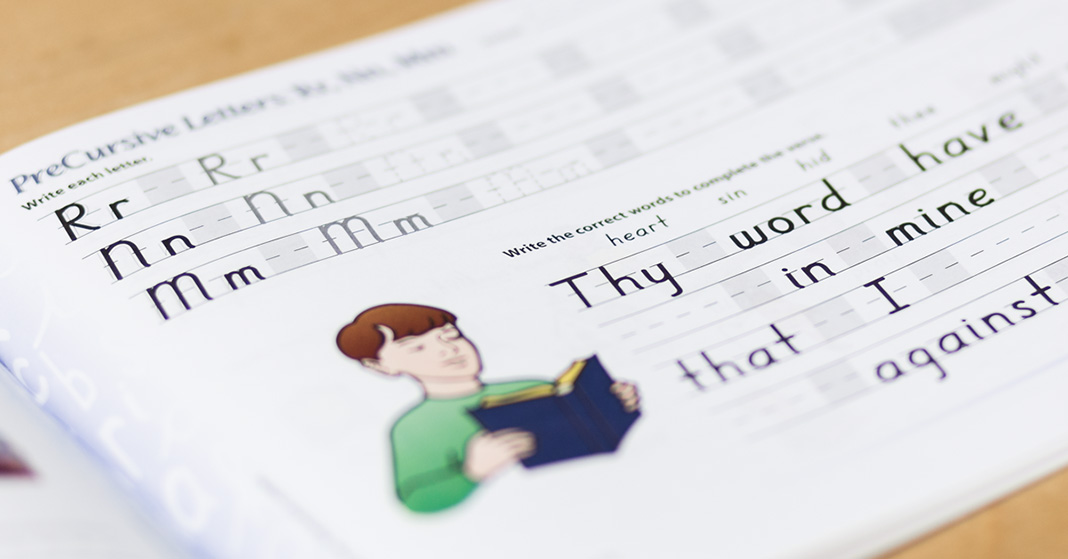
With technology always available, there are many skills we might think would become obsolete. Handwriting skills among them. After all, if we can type emails with our thumbs or dictate messages on our phones, what’s the point of writing something with our hands? And if there’s no point in keeping the skill, why should we have our kids learn it?
Is handwriting still a vital skill to train? As many homeschool parents know, things aren’t always as they seem. There’s more to handwriting skills than just putting pen to paper.
Handwriting skills are linked to motor skills.
One critical reason to encourage handwriting is the motor skills it develops. Handwriting challenges the writer to integrate gross motor skills, fine motor skills, and visual motor skills. Gross motor skills are the basic, larger muscle functions we use on a daily basis. Can your child maintain maintain posture and grip a pencil? Fine motor skills make small, subtle manipulations. Is your child able to write different words on a piece of paper? Mastering these skills helps children produce clear and consistent written work. Finally, visual motor skills are what we know as hand-eye coordination. How well can your child write what he sees?
Encouraging your children to learn and master handwriting requires them to use all three skill sets to process, understand, and copy what they see. Using all three skills together enables them to comprehend and use the information they learn each day.
Handwriting has a greater impact on us and other people.
The act of writing out our thoughts and what we hear is helpful in engaging in the learning process. As your children write, they’re using those motor skills as well as their mind to process information in a new format. Studies show that writing helps memory more than just typing on a computer. If your children keep their writing skills sharp, they will retain more of what they learn and function better on a daily basis.
Writing also often has a greater impact on other people than something typed. In an age of instant communication, taking the time to craft a handwritten note can mean so much more to the person reading. Handwriting is personal. You invest time to choose words and write carefully. A text or email takes seconds to punch out. If you teach your children to write personal messages to friends and family, they learn to communicate with more depth and intentionality than typing an email or sending an instant message.
Fluency in handwriting opens artistic potential.
One more reason that handwriting is important is that the skills go beyond everyday use. True, we can create all sorts of fun and interactive designs with our digital software. But often a Scripture verse or quote can come alive to you if you write it in an artistic form like calligraphy. Part of stewarding our creativity is using it to help us focus on God and remember His truths. Have you seen people Bible journaling by pulling out verses that have touched them and writing them in a beautiful script in the margins of their Bibles? Handwritten calligraphy, more than just an elegant typed font, can help us meditate and integrate valuable truths in our lives. By encouraging your children to hone artistic skills, you’re also giving them another tool to use to meditate on Scripture and encourage others.
Even though handwriting may be less common today, its impact on the reader is no less powerful. Training your children to write well and write clearly can help them be more influential as they grow older.
• • • • •
Matt recently graduated with an MA in communication studies and currently works as a freelance writer. He attributes the wild variety in his current opportunities to the exploration his parents gave him through the homeschooling experience. He enjoys theater, the gym, and choral music and will rarely say no to a cold glass of sweet tea.

